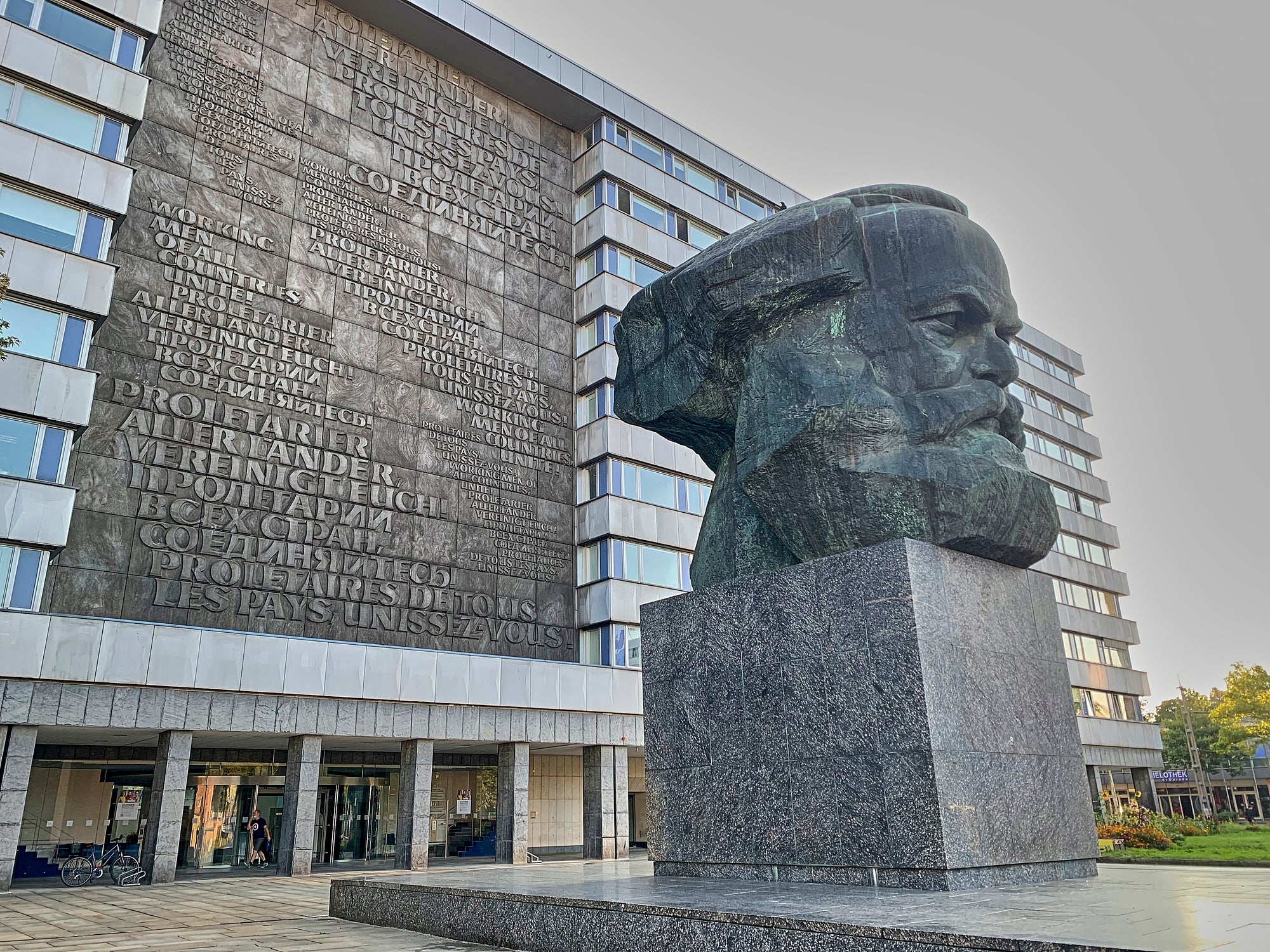In Chemnitz, you need to squint to find conventional beauty.
Ambling toward my hotel on a frigid January night, I turn right at Brückenstraße and pass a strange sight that also happens to be the city’s most well-known attraction – a gigantic 40-tonne bust of Karl Marx’s head. His furrowed brow is arresting, while behind is an enormous stone frieze pronouncing “Workers of the world, Unite!” in several languages.
At the top of the street, my hulking 26-floor hotel – absurdly large for a city of under 300,000 people – looms ominously in the dark and resembles Biff Tannen’s dystopian hotel-casino from Back to the Future Part II (but without the kitschy neon).

Unconventional? Yes. But this curious city in Saxony – the 2025 European capital of culture, shared with the border-straddling Nova Gorica in Slovenia – is well aware of its unorthodox charm. “An Eastern European city in a Western European country” is how it’s frequently described to me. And with 223 projects and over 1,000 events in the books for this year, there’s plenty to look forward to.
The third-largest city in Saxony, behind Dresden in second and Leipzig in first, and a busy industrial hub during the 19th and early 20th century, Chemnitz’s smoking chimneys were flanked to the south by the Ore mountains – one of the world’s oldest mining regions. Invariably, it became one of Germany’s wealthiest cities.
Read more: This German city is described as ‘Florence on the Elbe’ – but does it live up to the claim?
All of that changed, however, at the tail end of the Second World War, when Allied bombs rained down on the city, destroying 80 per cent of the city centre (the same percentage as the infamous firebombing of nearby Dresden). Seven years later in 1952, the East German government (GDR) decided to change Chemnitz’s name to Karl-Marx-Stadt (Karl-Marx-City), despite Marx himself having never stepped foot in the city. Two decades after that – in a show of thunderous Cold War hubris – the quixotic government decided what the locals needed was a colossal stone head of the Das Kapital author.
Following the fall of the Berlin Wall in 1989 and German reunification, 76 per cent of the city’s inhabitants voted to revert to the…
Click Here to Read the Full Original Article at The Independent Travel…
